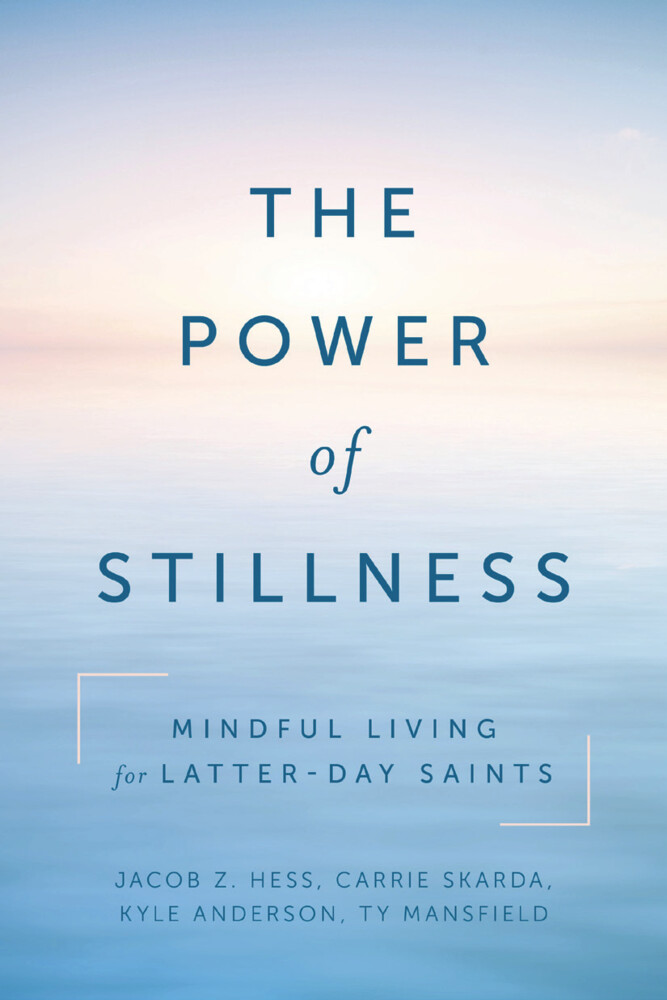When was the last time you knelt down, breathed deep, and then begged God to make something stop or go away or change? This kind of a plea for God to DO something is not uncommon: “Help my wife to . . .” “Guide us to know what more we can do to . . . ” “Soften his heart.” “Take this away!”
In these moments, we think of ourselves as being fully present with God. After all, we’re focused, we’re petitioning His attention, and we’re very sincere in our request. So why does God feel so far away in such a needful time?
Perhaps God seems distant because we’ve fallen into using prayer to get what we want—and as a tool to make our own agenda happen. This kind of subtle aggression involved in trying to push God to “do something” for us also demonstrates an underlying anxiety and limited trust in Him. In this mind state, author Richard Rohr cautions, “you will not access the Holy because the only thing that gets in is what you already think, what you already agree with, and what does not threaten you.” In that state, how can we possibly expect to receive more? And, as he puts it, “if you aren’t ready for more . . . how can you possibly be ready for God?”1
Instead of opening ourselves to His will in this moment, we sometimes end up treating God like a genie in a bottle, or like Santa Claus: if we can just convince Him that we’ve been very, very good, maybe He will deliver that blessing we want so much. Noticing this same tendency in one of our families, five-year-old William asked after a prayer one day, “Why do we keep telling Jesus what to do? Are we Jesus’s king? I thought He was our king?”
Rather than treating God (through prayer) as a means to our end—like a kind of tool for our purposes—we’ve found that our prayers substantially change when we start focusing on being a tool for His ends.
Prayer as Dialogue
Joseph Smith taught that part of the first principle of the gospel was “to know that we may converse with [God] as one man converses with another.”2 Elder Jeffrey R. Holland explained:
So often we make prayer a kind of a laundry list of requests. It’s sort of like we want to go to the store to get this and this and this—and I need it right now and I want it in the bag and I’m on my way. And we fail to remember that He’s supposed to speak back to us. We’ll finish a prayer and be up and on our way and back into the hubbub of the world. We need to let him speak to us, in a quiet setting, in a still setting. And that probably means after we’re through talking (and I hope it’s not just requests).
Listen to this next part: “When we’re through talking, we need His voice! We need to provide an environment for Him to speak to us. And that means . . . stay quiet. Stay silent. Stay in a private setting. We often deny Him a chance to reply!”3
In an interview with Mother Teresa of Calcutta, Dan Rather asked, “What do you say to God when you pray?” Her answer seemed to surprise him: “I listen.” “Well, then what does God say?” he added. With a smile, she said, “He listens.”4
Thoughtful, mindful, reverent prayer is about cultivating a relationship with God as a real Being to whom we can speak genuinely, intimately, and personally. That two-way communication is a big part of transforming “saying a prayer” into “being with God.”
President McKay’s habit was to go into “a darkened room, a private room, . . . kneel in the center of the room, not on a chair, not against a bed—and he would kneel and say nothing. This is not at the end of the prayer. This is before the prayer started. He would say nothing for a matter of minutes until he felt like he was worthy to approach the throne of the Lord, to come before deity. . . . And then he would wait [after speaking] . . . and give the Lord a way to answer and speak back.”5
Sometimes this means sitting heartfully present with Heavenly Father, in a state of patient not-knowing, for many years before specific answers emerge. But this holding still is not wasted time. Along with cultivating “general and loving awareness of the presence of God,” this prayer, as Thomas Keating writes, is about “consent[ing] to God’s presence and action within us” and “gently establish[ing] an attitude of waiting upon the Lord with loving attentiveness.” Working at this very real practice of prayer reaffirms “our intention to place ourselves at God’s disposal.”6
In this way, we develop what Keating calls “the habit of surrender to God’s increasing presence and action.” As Christian author John Backman writes, “By sitting in silence, focusing our attention on the present moment and the Spirit within it, we provide space for God to speak gently to, and move within, our souls.”7 This cultivation involves staying aware of the play of our own desires and hopes in prayer, with an intention of yielding to higher desires and hopes whenever a discrepancy comes into view. As Keating adds, “sometimes our own gentle activity predominates, and at other times the Spirit takes over”—with the presence, influence, and power of the Holy Spirit growing over time in prayer.8
This shift in our prayers can be relieving and exciting. Rather than constantly trying to get God on board with Our Big Plans, we start to ground ourselves in the conviction that Father sees more than we do. If that’s true, then our time with God becomes a constant inquiry to better understand and align ourselves with a will whose boundaries are forever extending beyond our own finite perspective—like the horizon on a mountain hike.
When compared with a make it go away prayer, this kind of “mighty” prayer involves a full presence that feels different: we are authentic and real with Him, even about our pain—but we are also quiet, humble, and reverent in His presence.
Rather than the same old ritual, this kind of earnestness opens up a rich variety of prayer experiences. For instance, voicing the confusion or pain that brings us to our knees may have a heart-aching intensity. Or, in less stressful periods, we may notice our hearts just feeling tired or heavy with everyday concerns. In happier times, our hearts may be bursting with gratitude. But in all cases, as we sit in His presence, fully there, surrendering our limited understanding and will to His, a more subtle experience with God unfolds. As we make space in our hearts for His will, love, and wisdom, we begin to feel our way past our subjective biases, and we invite true intimacy with God. We begin to trust Him.
Rather than a duty or something to “get done,” prayer can thus become a communing act of intimacy. Instead of an instrumental “tool” toward our favorite ends and agendas, this kind of prayer becomes a unification or at-one-ment—a way to consistently bring our heart and mind into alignment with God’s, over and over . . . prayer by prayer.
Editor’s note: This article was originally published on LDSLiving.com in March 2020.
The Power of Stillness
1. Richard Rohr, Silent Compassion: Finding God in Contemplation (Cincinnati, OH: Franciscan Media, 2014), 55–56.
2. Joseph Fielding Smith, comp., Teachings of the Prophet Joseph Smith (Salt Lake City: Deseret Book, 1976), 345.
3. Emphasis added. Excerpt found at 29:40–30:35 in “Face to Face” with President Eyring and Elder Holland.
4. As cited in Philip Yancey, Finding God in Unexpected Places (New York: Random House: 2005), 246.
5. Excerpt found at 41:00–42:00 in “Face to Face” with President Eyring and Elder Holland.
6. Thomas Keating, Intimacy with God: An Introduction to Centering Prayer (New York: The Crossroad Publishing Company, 2009), 17, 19, 43.
7. John Backman, Why Can’t We Talk? Christian Wisdom on Dialogue as a Habit of the Heart (Woodstock, VT: SkyLight Paths, 2013), 53.
8. Keating, Intimacy with God, 19.


